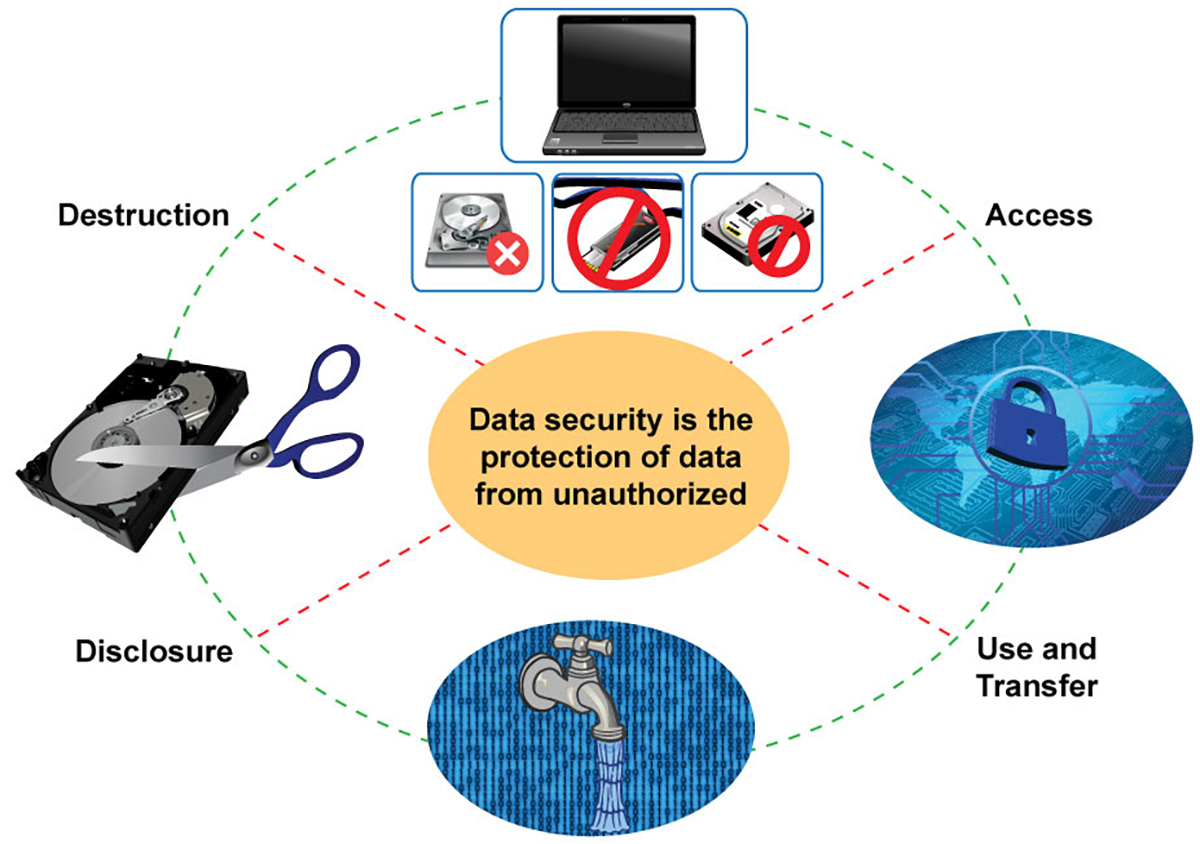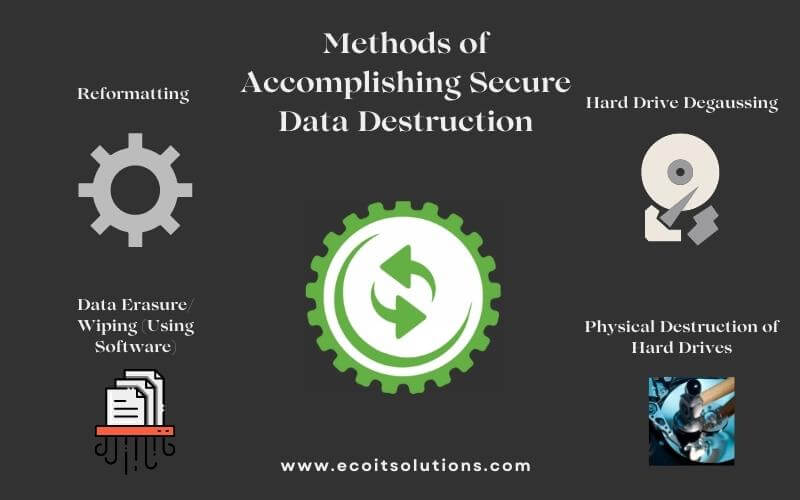How to Incorporate Data Destruction Techniques right into Your Cyber Security Method
How to Incorporate Data Destruction Techniques right into Your Cyber Security Method
Blog Article
Checking Out the Relevance of Information Devastation in the Context of Computer System Security Services and Protecting Confidential Data
In an era where information violations are increasingly typical, the value of effective information destruction can not be overstated. What approaches can organizations implement to improve their information destruction procedures?
Understanding Information Destruction
Information destruction is a vital element of computer system protection that includes the permanent removal of data from storage space gadgets to avoid unauthorized accessibility and potential information breaches. In a progressively digital landscape, organizations encounter heightened threats connected with delicate info being incorrectly accessed or exploited. Efficient data devastation safeguards against these hazards, making certain that confidential dataâEUR" such as customer info, intellectual residential or commercial property, and monetary recordsâEUR" can not be recovered after disposal.
Understanding the significance of data destruction extends past plain conformity with regulative and legal structures; it is important for maintaining organizational integrity and trust. When information is poorly taken care of or improperly ruined, the consequences can be severe, consisting of economic loss, reputational damages, and legal liabilities.

Approaches of Data Obliteration

One widespread method is data wiping, which involves overwriting existing data with random patterns multiple times. This technique renders the original data irretrievable, making it a popular choice for organizations seeking to protect secret information.
One more method is degaussing, which uses a powerful electromagnetic field to disrupt the magnetic domain names on storage space tools, properly getting rid of the information. This approach is particularly effective for magnetic media yet is not applicable to solid-state drives.
Physical destruction is another robust method, including the shredding or squashing of storage space gadgets. This approach guarantees that data recuperation is practically difficult, making it excellent for very sensitive info.
Finally, security can act as a complementary technique to information elimination. By encrypting data prior to deletion, organizations can include an extra layer of safety and security, guaranteeing that even if remnants are recuperated, they remain hard to reach without the decryption secret. Each method must be chosen based upon the level of information level of sensitivity and the particular protection needs of the organization.
Legal Conformity and Data Protection
Organizations need to navigate an intricate landscape of lawful demands connected to data protection, particularly after carrying out methods of data eradication. Numerous guidelines, such as the General Information Security Policy (GDPR) and the Health And Wellness Insurance Coverage Transportability and Liability Act (HIPAA), enforce rigorous standards on exactly how organizations need to get rid of and manage of delicate information. Failing to adhere to these regulations can result in significant lawful repercussions, consisting of substantial fines and reputational damages.
Information destruction processes need to be meticulously documented to demonstrate compliance with relevant regulations and standards. This documentation not just functions as evidence of adherence to lawful obligations but likewise shows a dedication to guarding sensitive information. Organizations ought to likewise develop clear plans pertaining to information retention and destruction timelines, guaranteeing that information is not held longer than essential.

In addition, normal audits and assessments of data devastation techniques are vital to maintain conformity and adjust to advancing lawful structures (data destruction). By proactively attending to lawful demands, companies can alleviate dangers connected with data violations and show their dedication to information security. Ultimately, focusing on lawful conformity in data damage processes is not continue reading this just a regulatory responsibility, but a fundamental facet of a robust information safety technique
Influence On Organization Track Record
The credibility of a business can be significantly affected by its approach to information damage and management. In today's electronic landscape, where data violations can happen anytime, the failing to effectively take care of delicate info can result in serious repercussions. Organizations that inadequately manage data damage risk subjecting confidential consumer info, which not only goes against privacy laws yet likewise deteriorates count on among stakeholders and customers.
A tarnished online reputation can result in reduced client commitment, as customers come to be hesitant to engage with an organization that has demonstrated neglect in protecting their data. Unfavorable attention bordering a data violation can have a long lasting impact, as potential clients could be discouraged by the regarded lack of protection. This can cause a direct decrease in profits and market share.
Moreover, businesses that focus on data devastation as part of their safety strategy can enhance their reputation by showcasing their dedication to safeguarding delicate information. By embracing stringent information monitoring methods, companies can not just minimize threats yet additionally position themselves as trustworthy entities in their particular industries, therefore reinforcing their total brand image.

Best Practices for Secure Disposal
Implementing ideal methods for protected disposal of information is necessary for alleviating dangers related to information violations and ensuring conformity with privacy regulations. Organizations must embrace an extensive data disposal plan that published here details procedures for both digital and physical data devastation.
For physical data storage space tools, such as hard disks, shredding or degaussing is suggested to stop data recuperation. Furthermore, companies ought to maintain a chain of safekeeping paperwork during the disposal procedure, making sure responsibility and traceability of disposed items.
For electronic information, using software that sticks to market requirements for information cleaning is vital. This software application ought to overwrite existing information numerous times, making recovery basically impossible. It is also important to confirm the efficiency of the data devastation process via audits or third-party evaluations.
Educating staff members on secure disposal methods adds an additional layer of security, as human error can commonly bring about information exposure. On a regular basis assessing and updating disposal policies makes sure placement with evolving policies and technological advancements. By carrying out these ideal practices, organizations can substantially reduce the danger of unapproved data gain access to and boost their general information defense strategy.
Final Thought
In verdict, information destruction is a basic facet of computer safety and security solutions that makes certain the defense of secret information from unauthorized accessibility. Implementing efficient techniques of information obliteration, sticking to lawful conformity, and recognizing the effect on organization reputation are vital elements of a detailed data security approach. By embracing finest methods for secure disposal, companies can cultivate count on with clients and guard you could check here sensitive information, eventually contributing to a more safe and secure electronic landscape.
In an age where data violations are significantly usual, the value of reliable information devastation can not be overemphasized.Data destruction is a crucial part of computer security that includes the permanent removal of data from storage tools to avoid unapproved accessibility and prospective information breaches. Organizations ought to likewise establish clear plans concerning information retention and devastation timelines, guaranteeing that data is not held longer than essential.
By proactively resolving lawful demands, companies can alleviate risks linked with information breaches and demonstrate their dedication to data safety and security (data destruction). Inevitably, focusing on lawful compliance in information damage processes is not simply a governing responsibility, yet a fundamental aspect of a robust data safety strategy
Report this page